12 Fast Growing Indoor Plants

This post follows our research editorial guidelines.

If you’re anything like me, then you love covering any available spot in your home or office with plants.
Not only are house plants nice to look at, but they offer numerous benefits in terms of improving air quality throughout your home, combating high stress levels, and surprisingly, even improving your focus and overall mood (Check out my list of 11 Purple Leaf Plants + Their Mood Boosting Benefits).
Despite how addictive houseplants are, though, one of the most frustrating things is when you bring a new houseplant home that refuses to grow. You have this vision of long, sprawling vines but instead, you’re stuck with a baby plant that doesn’t quite fit the space it was intended for. Or even worse you have a tiny plant in a massive pot.
However, the good news is that there are a ton of fast-growing indoor plants you can buy. Below, I go over the 12 most popular fast-growing houseplants, as well as a few important tips you can use to make sure your plant is at its healthiest.
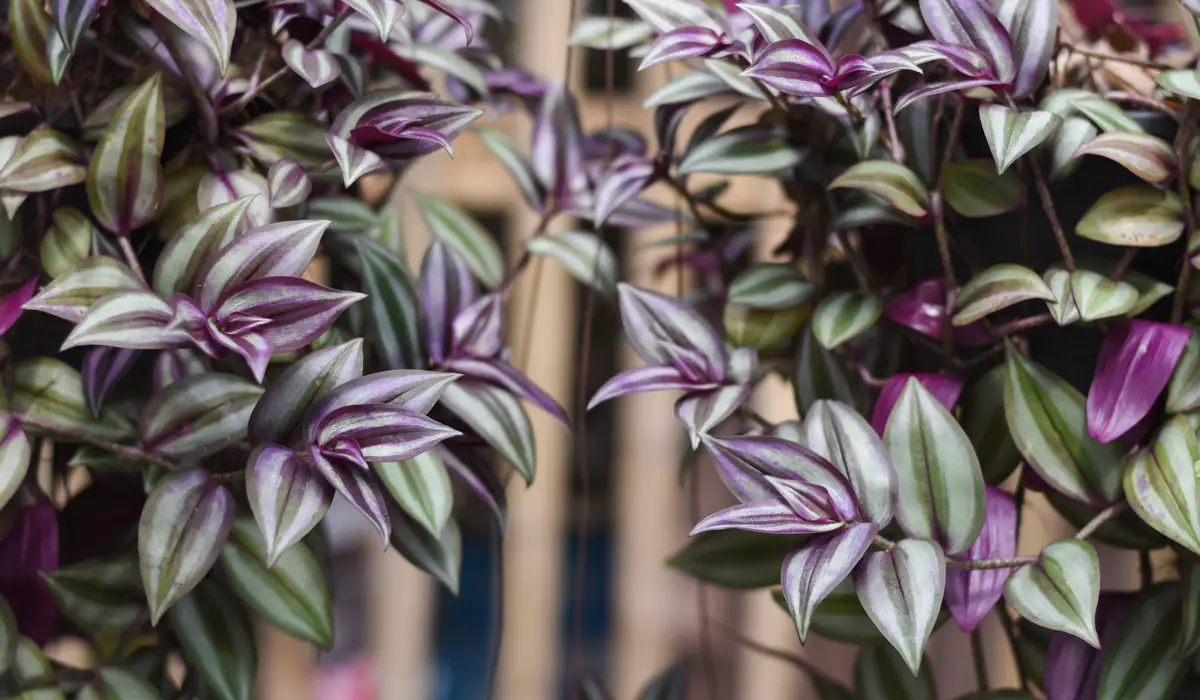
Table of Contents
How to Make Indoor Plants Grow Faster
When you’re growing plants indoors, it’s easy to feel like you’re at a disadvantage, especially if your indoor space doesn’t offer as much access to natural sunlight.
However, don’t panic because there are several ways you can help your indoor plants grow faster, regardless of where they’re located throughout your home.
The first thing you need to do is make sure that they are receiving some sort of indirect light. Just because one plant doesn’t require a lot of sunlight, it doesn’t mean that it should go without it completely.
All indoor house plants need to be placed somewhere that receives at least some amount of natural, indirect sunlight, particularly in window sills that are either east or west facing.
If natural light isn’t possible, instead turn to artificial plant lights. These will help your indoor plants thrive. Another important factor to keep in mind is your plant’s watering needs throughout the year. If you’re using artificial lights, then the amount of water your plant may need will likely stay the same throughout the year.
However, if you’re not using artificial light, then you’ll have to keep in mind how often you should water your indoor plants. While you should pay attention to the plant care guide, keep in mind that plants tend to not need as much water during the winter season.
This means that you have a greater likelihood of waterlogging – and killing – your plants when it’s colder unless you use well-draining soil. Use fertilizer to make sure your plants get the nutrients they need and clip back any overgrowth that may lead to issues.
When you apply these steps, you’ll be helping your indoor plants to grow.
What Type of Lighting Do Fast Growing Indoor Plants Need? (Low Light vs. Bright, Artificial Light)
The type and amount of lighting a fast-growing plant needs are completely dependent on the type of plant it is. After all, each plant has its own lighting requirements.
Generally speaking, plants that need low-medium light exposure do well beneath fluorescent lights, such as those that may be present in either your kitchen or bathroom.
Just be sure to give your plants a break overnight, as anything more than 18 hours of light exposure could create issues with the plant’s normal processes. All plants need to experience darkness at least for a couple of hours a day.
However, in most cases, common houseplants (such as the ones I’ll be discussing below), benefit from having bright, indirect light exposure.
In other words, this could be under the use of fluorescent or artificial light, as described earlier, or next to your bed or couch that receives light, but not necessarily a ton of natural sunlight.
A good rule of thumb is to think about where your plant can see bright light. Once you determine this, you’ll know where to place your houseplant so that it’ll grow quickly.
Things to Avoid to Make Your Plant Grow Fast (Tips From an Experienced Gardener)
There are three main things you need to have when it comes to promoting fast and healthy plant growth:
- Sufficient lighting
- Correct temperature
- Proper watering
And, as you may have guessed, NOT having these three things (or not doing them correctly) can lead to a big problem in terms of healthy plant growth and having a lush indoor garden.
For your plants to grow fast (or grow properly at all), they first and foremost need to adhere to the proper watering schedule. A pothos plant only needs to be watered once a week, whereas a wandering jew needs to be watered only when the soil about an inch down is dry.
Watering too much can lead to water logging, which will essentially kill your plants, whereas not watering them enough can lead to the same place. Better to err on the side of caution and follow the care instructions on your plant at purchase, or check our website for our plant care guide, including what you need to fertilize your plants.
The next thing you should avoid is not offering your houseplant sufficient lighting. Just like water, each houseplant is going to require a different amount of light exposure. Going back to the wandering jew, this plant is known to need lots and lots of bright, indirect sunlight whereas a purple passion plant can survive in moderate lighting conditions.
The last thing you have to consider is whether or not your plant is growing in the right temperature. While purple passion plants prefer a cool environment, a swiss cheese vine (or swiss cheese plant) prefers temps as high as 85 degrees Fahrenheit.
If a plant is placed in too cold of temperatures, it will halt growth. Nothing will stop plant growth faster than that.
Avoid overwatering or underwatering your plants, as well as putting them in too cold of an environment or exposing them to too little or too much sunlight. Avoiding these things can help your houseplants to grow.
1. Spider Plant (Chlorophytum comosum)
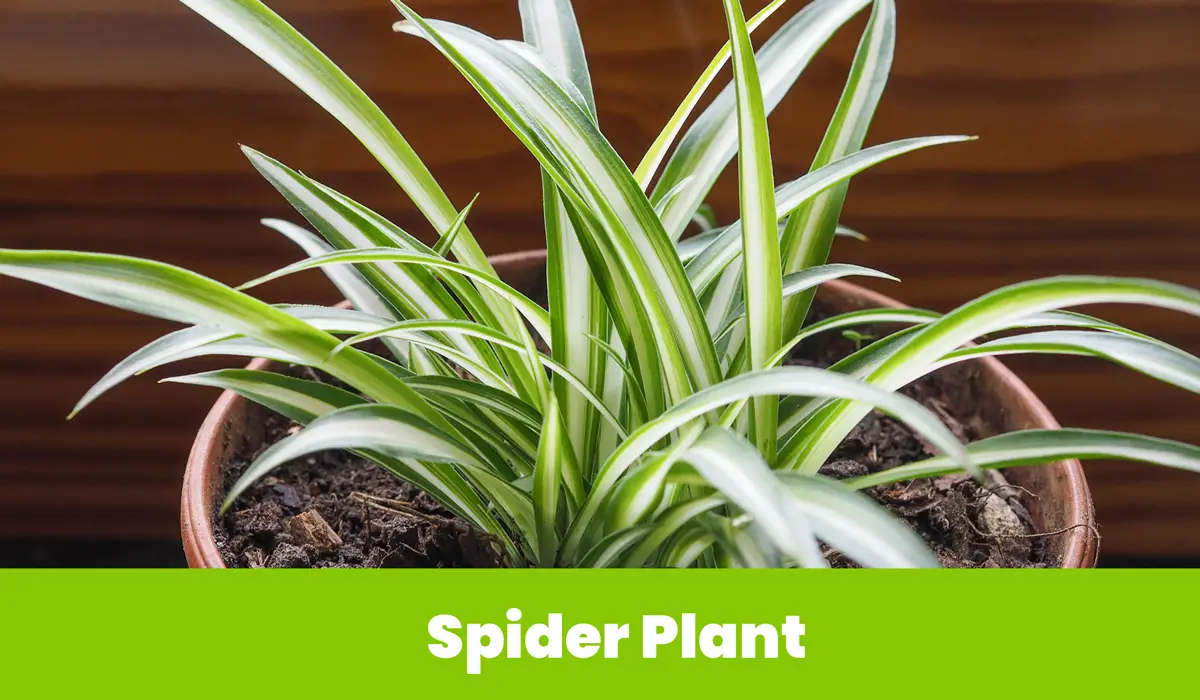
A spider plant is a very fast-growing houseplant. They especially look nice in a hanging basket. Spider Plants are easy to care for and will thrive in a variety of conditions.
Light
This plant prefers bright, indirect sunlight.
Soil
These plants like well-draining soil. Preferably a well-draining potting mix.
Water
They need to be well watered but not soggy. Too much water can cause root rot. They prefer to dry out between waterings.
Size
Spider plants can grow to be anywhere between 12 to 15 inches tall.
2. Pothos plant (Epipremnum aureum)
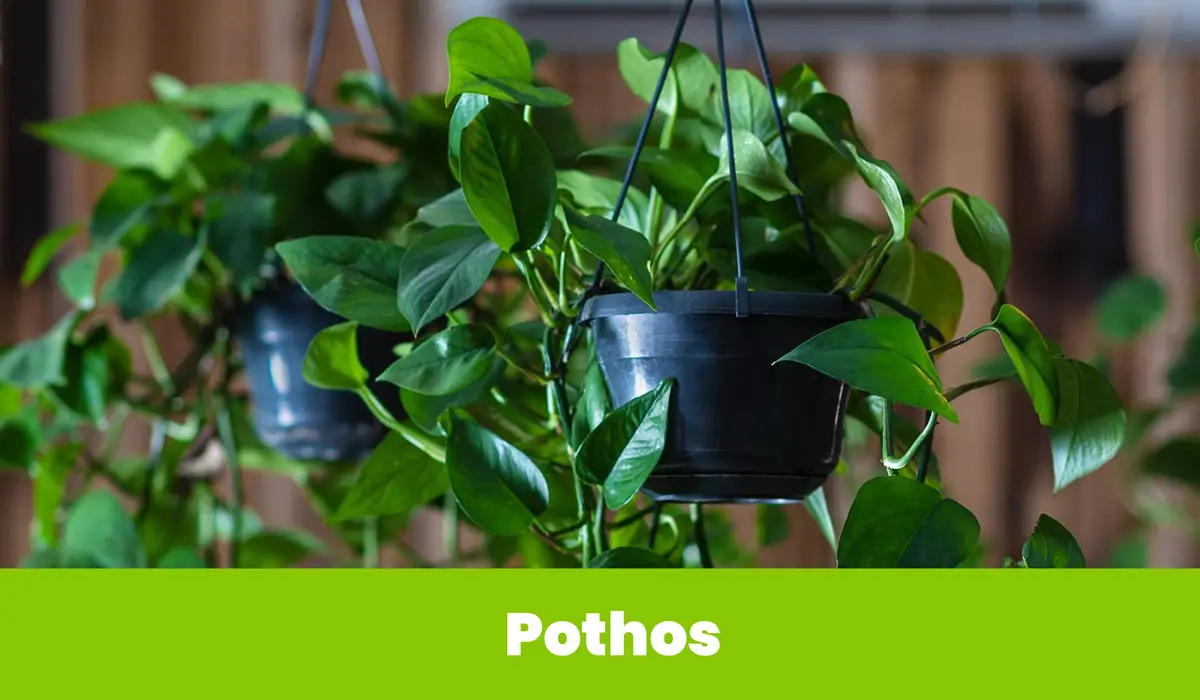
Pothos are one of the most popular houseplants (and if we’re being biased one of my personal favorites). They’re easy to grow and can help liven up any room in the house.
Plus, they require really easy care and are easy to propagate. All you need to do is cut right below the node on the stem and place them in some water. Since these are trailing plants, they can even be trained to grow in spirals.
Light
This light green plant grows best in either full sun or partial shade. Keep an eye on it to make sure it’s not getting too much sun. If it’s not getting enough sun, it will turn back into all-green foliage.
Soil
This plant prefers soil that is moist but well-drained to prevent root rot. Neutral to slightly acidic soil is preferred.
Water
Make sure you let your soil dry out completely between waterings. If you’re not sure when to water, don’t worry, as your plant will begin to droop when it needs it. However, don’t wait for it to brown and shrivel or else it will be too late to save.
Size
This plant can grow up to 40 feet long and 3 to 6 feet wide, which is pretty astonishing.
3. Snake Plant (Dracaena trifasciata)

Did you know that the snake plant has benefits outside of having glossy green leaves that are pretty to look at? It’s true!
This plant is one that is able to combat allergies, boost mental health, and help alleviate minor aches and pains. Plus, it’s an easy plant to grow in water. This means that if you choose to propagate it, you don’t need soil, as it can grow even without it.
Here’s what you need to know about this fast-growing plant:
Light
While snake plants prefer indirect sunlight, they can adapt to conditions of either full sun or areas that are dimly lit.
Soil
This plant likes soil that is well-drained and sandy. It also likes its soil pH to be anywhere between slightly acidic to slightly alkaline.
Water
Less is more when it comes to watering this plant. Let the soil dry out completely between waterings.
During winter, take your watering schedule down to once a month or when the soil feels dry. If you’re not sure, you’re better off under-watering than over-watering.
Size
A mature snake plant can grow anywhere from 6 inches to 8 feet tall.
4. Wandering Jew Spiderwort (Tradescantia zebrina – A Popular Fast Growing Houseplant for Beginners)
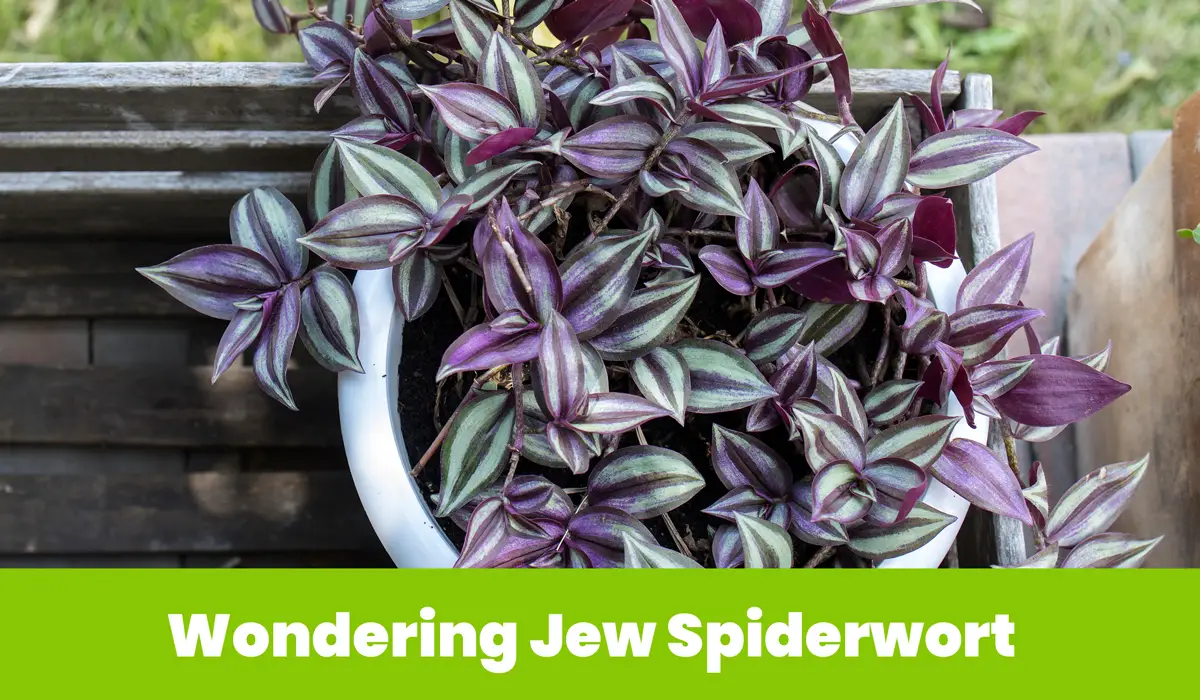
Pretty to look at and one of the easiest plants to care for, the wandering jew is one of the best plants for beginners. It’s also incredibly easy to propagate.
Light
This plant likes to have full sun or partial shade.
Soil
This plant likes to grow in loam or sand and can stand pH levels that range from acidic to alkaline to neutral.
Water
Watering this one is pretty simple. Keep the soil moist and cut back during the winter months. With this plant, there’s room for error. If you forget to water it on occasion or accidentally overwater once or twice, don’t worry, this plant can handle it.
Size
This plant grows to a full size of anywhere between 6 to 9 inches.
5. Swiss Cheese Vine (Monstera Adansonii & Also Part of the Swiss Cheese Plant Family)
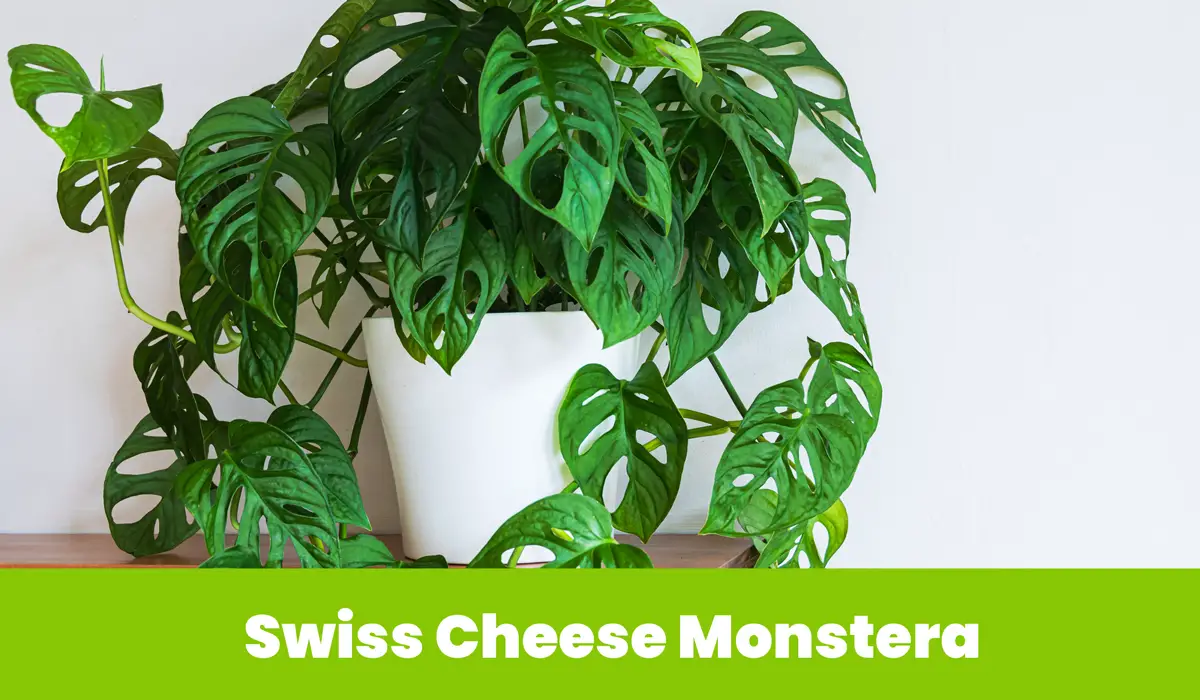
This fast growing plant thrives in an indoor environment. Not only are they one of the fastest-growing indoor plants, but since they’re also trailing houseplants, they always tend to make a statement.
Light
This plant needs bright, indirect sunlight. Direct sunlight can be hazardous and cause it to burn.
Soil
This plant needs moist, well-draining soil. Peat-based potting mix will work best. Keep the pH level somewhere between 5.5 and 7.
Water
This plant likes to stay moist but not soggy. If you’re not sure if it’s time to water, stick your fingers about an inch deep in the soil. If it’s relatively dry, it’s time to water.
Size
They can be about 1 to 3 feet wide. How tall it gets depends on if you have it indoors or outdoors. Indoors, it can be 3 to 8 feet tall. outdoors, it can reach between 10 and 13 feet.
6. Calathea Makoyana

Do you reside somewhere warm? If you’re looking to combat interior humidity levels, these plants are a great option.
Also known for being able to trap household dust, calathea houseplants can also grow up to 2 feet. So, they’re perfect for making a bold statement.
Light
Oddly, this tropical plant actually prefers to be in the shade. It’s recommended that you keep this one out of direct sunlight. Too much direct sunlight can cause your leaves to burn and fade.
Soil
This plant prefers soil that is humus or loam in texture. It needs a pH of somewhere between neutral and slightly acidic to thrive.
Water
You have to keep this one consistently moist. Be weary to not overwater the plant and cause it to get waterlogged. Just make sure that the soil remains moist in between waterings.
Size
These plants grow to be 1 to 2 feet high and 1 to 2 feet wide. They’re used to growing on the jungle floor under a canopy of trees which is why they tend to stay fairly short.
7. Fiddle Leaf Fig (Ficus lyrata)

Though this pretty fast growing plant is known to have many benefits, it’s commonly known for its big leaves and green foliage. In fact, these large leaves can grow to be about 2 feet.
Light
This plant requires indirect sunlight. Preferably it needs a situation where the light is bright but filtered. In direct sunlight, the plant will burn, and in low light, the plant won’t grow rapidly.
Soil
This plant needs an indoor potting plant mix to grow. It needs to drain well and have a pH between 6 and 7
Water
You only need a fairly moderate amount of water for this one. If you check the top inch of soil and it’s dry, then it’s time to water. During the winter, water it less than that.
Size
These plants can be pretty tall. If you’re growing it indoors, it can grow up to 10 feet tall. If you plan on growing this one outside, it can grow up to 50 feet.
8. Turtle Vine (Callisia repens)
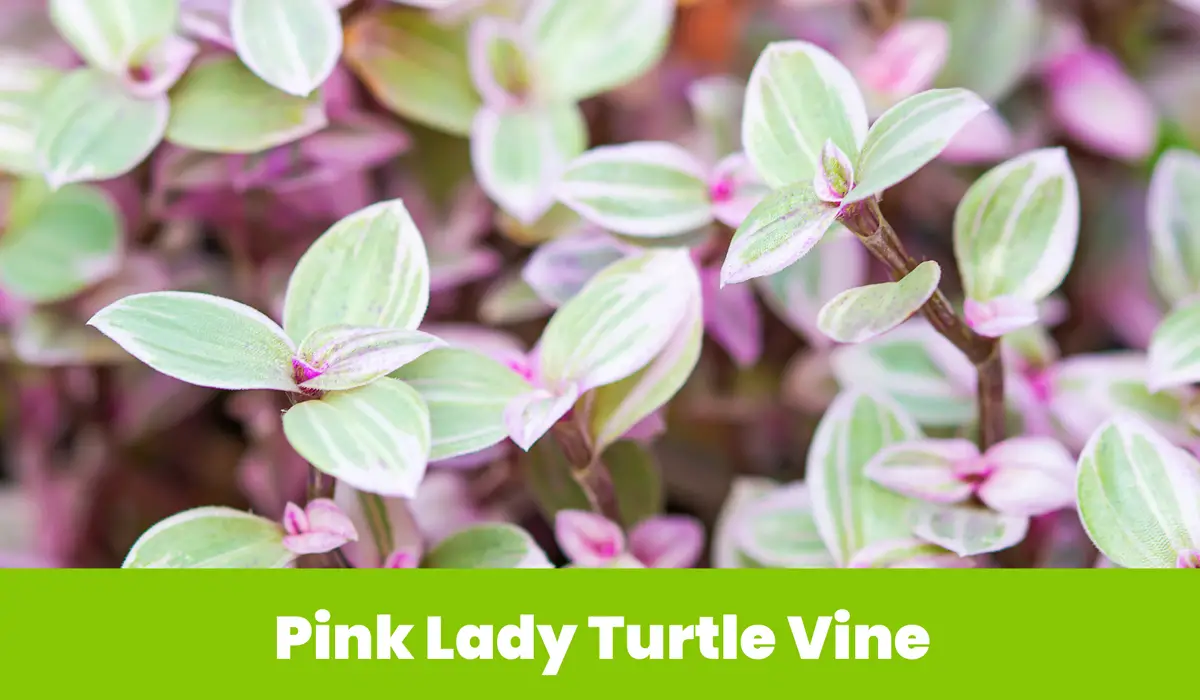
Aside from having an adorable name, this plant can grow well both indoors and outdoors because it’s part of the succulent family. When planted in the right environment, it is very quick growing.
Light
Turtle vines like indirect sunlight. They need a bright area but filtered to avoid burning.
Soil
This plant needs acidic soil. It likes soil with a pH between 5 and 6.
Water
Turtle vines love to have moist soil. A general rule of thumb with this plant is if the pot feels light when you lift it, it’s time to water again.
Size
If they’re given the room to grow, Turtle vines can grow to be around 10 feet tall and 10 feet wide.
9. Umbrella plant (Schefflera / Heptapleurum)
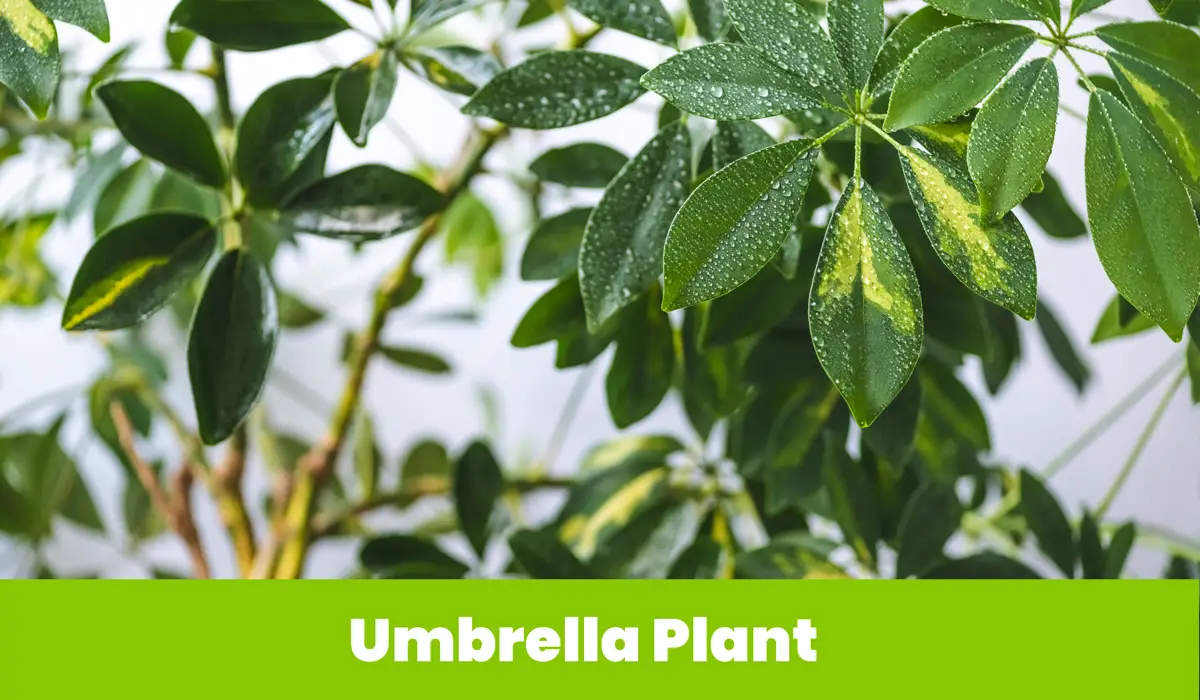
Out of all the fastest growing plants on this list, the umbrella plant, unfortunately, has a low resistance to pest infestations. Indoor plants need to be free from pests in order to remain healthy, so this one may require a bit more maintenance from you.
This is one of those indoor plants that grow pretty large – up to 25 feet, in fact.
Light
Umbrella plants like bright, indirect light. In the summer, it’s recommended that you move them outside to a spot that is covered and keeps them out of direct sunlight. Direct sunlight can burn the leaves of this plant.
Soil
Umbrella plants prefer to be planted in slightly acidic soil that drains well. For the inside, we recommend going with a potting soil that drains well. Outside, sandy loam soil will be best as long as you keep this plant from an area where it can get waterlogged.
Water
With this indoor tree, wait until the soil dries out and then soak it with water. Be sure to also spray the leaves. If your leaves start to yellow or droop, it’s a sign of overwatering and you need to cut back.
Size
Inside, these plants can grow to be 4 to 6 feet tall and 3 to 6 feet wide. However, if you’re growing this plant outside, make sure you have plenty of room since it can grow up to 25 feet tall!
10. Purple Passion Plant (Gynura aurantiaca)
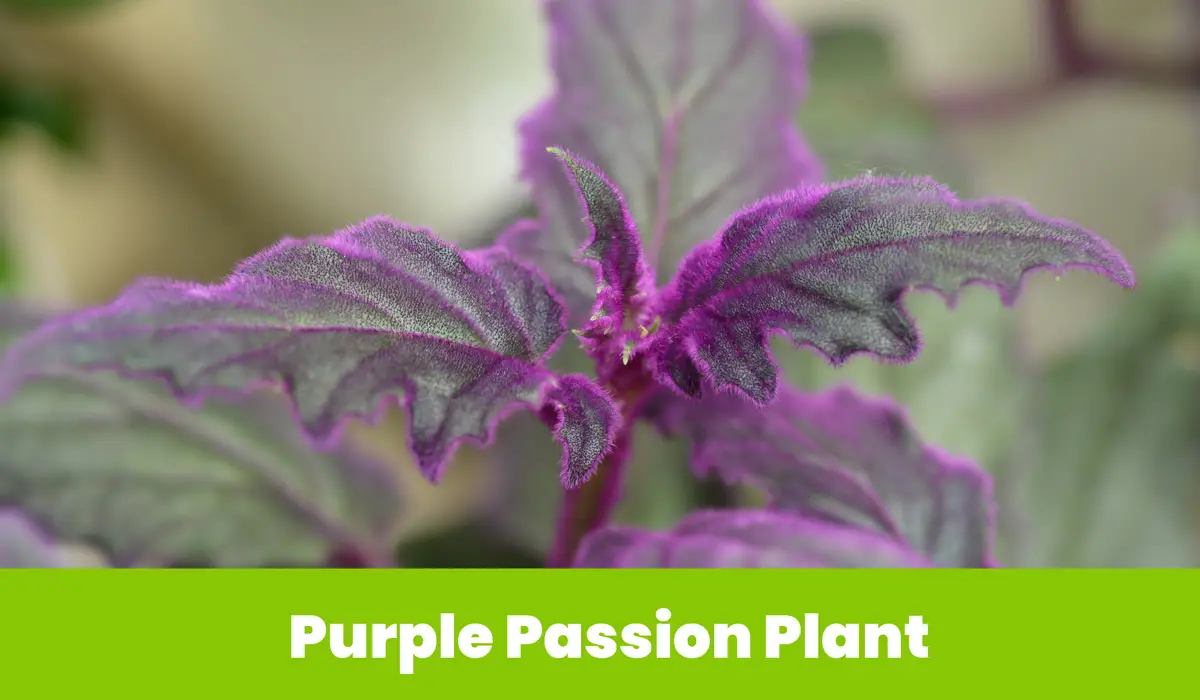
Ask any gardener and they’ll tell you that purple passion plants are not only unique but pretty easy to care for.
Light
Don’t put purple passion in direct sunlight. When it comes to how to light this plant, indirect sunlight or filtered light work best. It actually likes the morning sun over other parts of the day. An afternoon sun can cause your plant stress or damage.
Soil
This plant needs to be able to drain easily. We recommend putting pebbles at the bottom of your pot to let this happen. Whatever planting mix you decide to go with should also be able to facilitate the ability to drain properly.
Water
Purple passion only needs its soil to be slightly moist. Be sure to check the soil to make sure it’s not too moist, which can lead to root rot. The previously mentioned pebbles at the bottom of your planter can help with this too.
Size
This plant only grows to be 1 to 2 feet high but can grow vines off of it that are up to 5 feet long.
11. Ti Leaf (Cordyline Fructosa and Fast-Growing Houseplant)

Aside from being one of the fastest growing houseplants, Ti Leaves have long been used for other purposes, including medicine, for wrapping gifts, and even in cooking.
Light
The amount of light the Ti Leaf needs is a little difficult to nail down. It actually does well in direct sunlight, but you can’t give it too much direct sunlight, or else it will start to brown.
If you grow this one indoors, try to shade it during the hottest hours of the afternoon. If your room doesn’t get enough light, you might need to supplement it with artificial light.
Soil
The best soil to grow a Ti Leaf in is sandy, loamy soil that is well-drained and fertile. Make sure the area you plant in is not too soggy or else you’ll get root rot.
Water
This plant needs to have soil that is moist but not saturated regularly. If you’re using the proper soil, it’s recommended that you water this plant a couple of times a week during the growing season. If you’re not sure if it’s time to water, check to see if the top inch of the soil is dry.
Size
This plant only grows to be between 2 to 10 feet tall and 3 to 4 feet wide. With proper care, it’ll have no problem growing tall.
12. String of Hearts (Ceropegia woodii, and One of the Fastest Growing Houseplants)
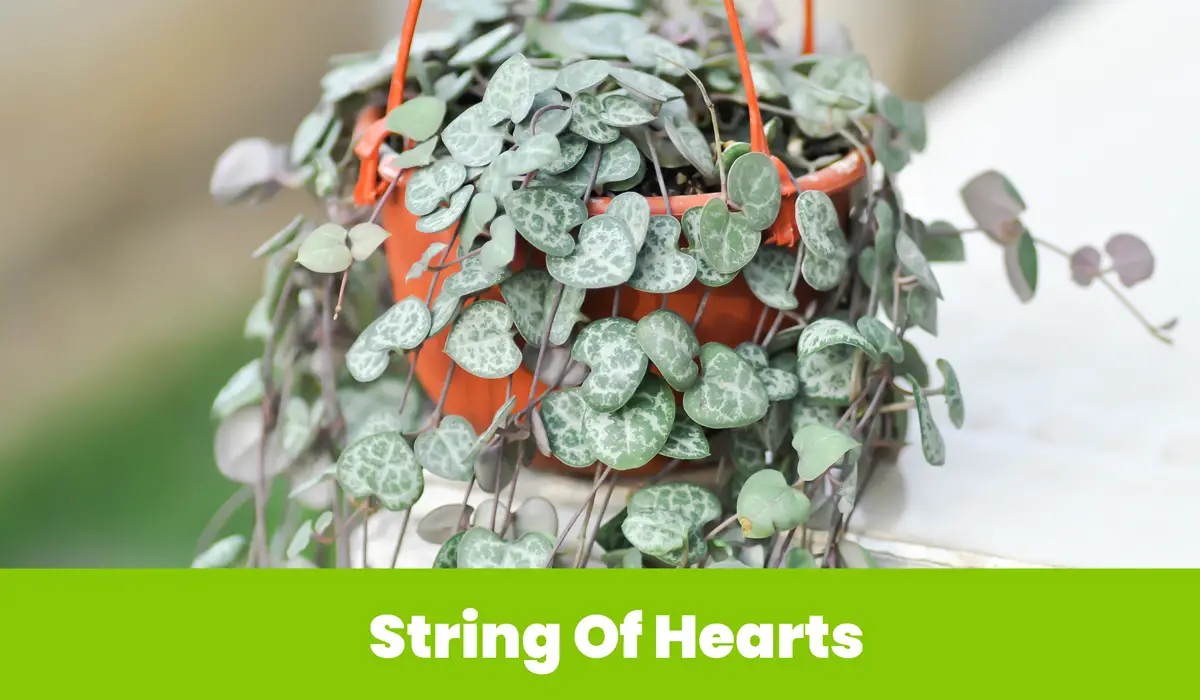
A very versatile plant, string of hearts can grow up to six feet in length or longer, depending on how much space they have. Though it will take five years for this plant to reach maturity, it tends to grow rather quickly.
Light
Though this plant can survive both indoors and out, it grows best when placed in a window that’s facing either the west or south.
Soil
String of Hearts is one of those plants that grows best in well-draining soil. Allow it to dry in between waterings, as it can become waterlogged very quickly.
Water
If you’re like me and have had trouble with overwatering your plant in the past, this is the preferred house plant for you because it tolerates dry soil very well. Just remember to try and reduce how often you water this plant during the winter months.
Size
The heart-shaped leaves are approximately 1-2 centimeters in both length and width. However, they can grow up to several feet long when hanging down. If you’re in the market for the fastest plants to add to your home, this is a great option. They grow like a vine (pun intended).
Final Thoughts on Fast Growing Houseplants
Plants that can grow indoors and require little care are the dream. Any of these houseplants would look great in your home as they all grow quickly.
This list offers a great selection of the best fast growing houseplants so you can choose the plant you prefer based on style and care requirements. Plus, many of these vine plants can also be trained to grow and trail along walls for an even prettier style.
Before you know it, you’ll have your very own instant indoor garden full of lush green and purple leaves.
